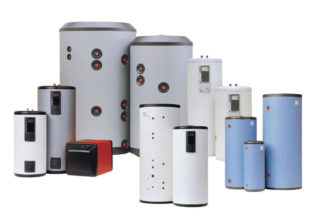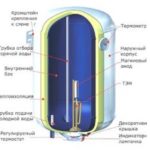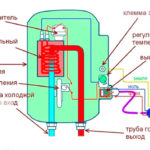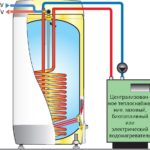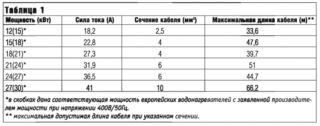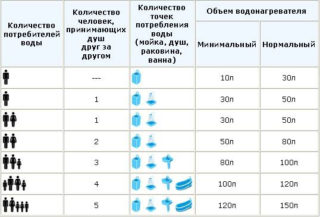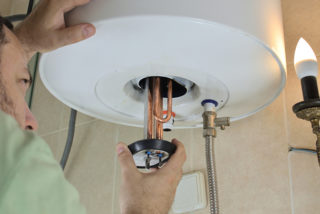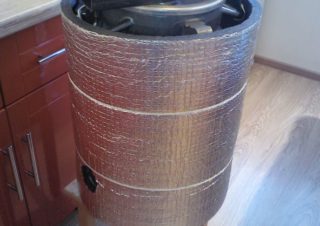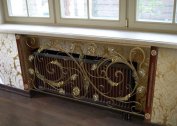An autonomous water heater, which does not depend on a centralized system, is useful in the country and in city apartments. Outside the city, communications are poorly developed, so house owners buy boilers. In urban environments, a constant supply of water may be interrupted due to repairs or accidents. The water heater will not allow residents of the apartment to remain without hot water for a long time. Heating devices vary in characteristics, type, cost. Before choosing, you need to find out what boilers are and what are their properties.
The main types of water heaters
All types of water heaters can be divided into electric and gas. The latter are practically not used, as they are considered dangerous. Electric heaters or boilers are characterized by quiet operation, ease of use and duration of operation. What the boiler looks like depends on the type of heating.
According to the heating method, boilers are divided into three groups:
- Flowing. They are an ordinary faucet in which water is heated.
- Cumulative. They look like a container for a liquid where heating is carried out.
- Combined.
Both types can be installed at home and in the apartment. The choice depends on the operating conditions and the requirements for the boiler.
- Storage boiler
- Flowing
- Combined circuit
Flowing
Flowing models are compact and instantly heat water. The liquid comes into contact with the heating element (TEN) and enters the hot tap. Such devices are suitable for installation in an apartment, since their work requires a pressure of water. Power ranges from 3 to 27 kW. In apartments with a 220 V network, it is forbidden to install a boiler with a load exceeding 8 kW. In a private house with a voltage of 380 A, you can install more powerful models.
Main advantages:
- Water heating rate.
- Minimum sizes.
- Appearance. Especially relevant heater, which looks like a regular tap. It will fit into any interior.
- Water is heated only when necessary. The rest of the time cold water flows from the tap, energy is not consumed for heating.
- The absence of an accumulation system does not impose restrictions on the volume of hot water.
Disadvantages:
- The inability to use powerful models in homes with poor wiring.
- High energy costs. Unsuitable for installation as a constant source of hot water.
- Risk of fluid overheating. It is necessary to choose a model with a temperature limiter.
Instantaneous water heaters are divided into two groups. There are non-pressure devices that heat the liquid for only one point of intake, and pressure ones that are built into the riser and can heat water for different rooms.
Cumulative
Devices with a storage tank are large compared to flow-through devices. The tank volume ranges from 10-20 to 80-200 liters. Cold and hot water are mixed in a vessel and fed through a mixer. When the liquid begins to cool and drops below the set temperature, the boiler starts to warm it again. Installation floor or wall.
Most often, large-volume water heaters are installed in country houses. It is necessary to determine in advance how much water it will be designed for.Which boiler to choose for a private house depends on the number of residents. A shower takes about 40 liters of water. Miniature appliances with a volume of about 24-30 liters are placed in the apartment.
The positive aspects include the following:
- Profitability. The power of the complete device is 1.5-3 kW. Can be connected to 220 V.
- One boiler is enough to provide hot water to all water intake points.
- Duration of operation with proper operation.
The disadvantages include the size of the boiler and the heating of the entire volume of water at once. Heating time can reach 4 hours.
Combined
Such heating devices are practically not used. They combine an accumulative and flowing boiler. They can work in two modes. The maximum weight of the device is 6 kg, the volume of the tank is 10-30 liters.
Types of heating elements
In domestic boilers, two types of heaters are used - a heating element or a spiral element. The latter are used infrequently, as they are difficult to repair.
There are two types of heating elements - wet and dry. Wet is immersed in water and works on the principle of a boiler. It quickly forms scale. It is inexpensive. Dry ten do not interact with water, as it is protected by a special flask. Its heat transfer is higher, the service life is longer, but the price increases by 1.5-2 times.
Ten can be several. It depends on the volume of the tank and the additional functionality of the water heater.
Inner coating
Serious requirements are made to the inner coating, as there is constant contact with water. As a result, corrosion may form. To avoid this, the following materials are used:
- stainless steel;
- enamel coating;
- glass ceramic;
- titanium spraying;
- plastic coating.
The selection of material follows from the finances and requirements for the boiler itself. The cheapest and most unreliable are plastic-coated models. The best performance on stainless steel appliances. They work up to 10-12 years. The cost of such devices is high. The most expensive are titanium water heaters, whose service life reaches 15 years.
Enamel and glass-ceramic devices are considered less durable. Moreover, they are similar in properties to stainless steel. Enamel has high antibacterial and anti-corrosion properties. They can be damaged due to temperature jumps and interaction with solid particles. They serve an average of seven to ten years.
Tank shape and color
The housing of the heaters is round and rectangular. Its properties do not change from this. Round models are cheaper, but they have a more massive design. Rectangular appliances take up less space, they can even be hidden in a cupboard. A thicker layer of insulation is installed in them.
The choice of colors is small. The most popular heaters are white, gray and silver. To order you can make a device of any scale.
Vertical and horizontal heaters
Depending on the installation features, the water heater can be vertical or horizontal. They differ in design features and installation location.
The choice of a boiler for an apartment depends on the place that is reserved for equipment. For a small room, it is better to choose horizontal appliances. They are more expensive and more difficult to maintain, but take up less space.
There are universal boilers. They can be mounted in any way, and this will not affect the functionality and performance.
Boiler control
All parameters and operating modes are set manually or electronically.
Instruments with mechanical control are considered the cheapest, simplest and most practical options. In them, the heating level is regulated by turning the lever on the bottom of the boiler.There is a window on the case with which you can adjust the temperature. Such devices practically do not break. The disadvantage is that it is difficult to precisely adjust the heating level to degrees.
Electronic control is considered a more modern way of control. It is a display, buttons and sensors installed inside the boiler. The user can set the required temperature with an accuracy of degrees, create heating modes, perform diagnostics. The cost of models is higher, the risk of breakage also increases. Water heaters with electronics are susceptible to power surges.
Additional functionality and equipment
The boiler may have additional options. It is also important to pay attention to them. Depending on the functions, the equipment may also change. It is necessary to focus on the following factors:
- An additional layer of thermal insulation. The minimum thickness is 35 mm. For this, foam polyurethane can be used instead of foam rubber.
- Overheat protection. It is important to choose models with a protective function for country houses to maintain the safety of the home.
- Timer. With it, you can warm water at night, when electricity is cheaper. Suitable for those with a dual tariff electricity meter.
- Moisture protection. For the bathroom you need a model with IP44, in other cases, IP23 is enough.
- The presence of a power cable and a blasting valve. There should also be factory brackets and clips for attaching the case.
- The presence of a sleeve for isolation of currents.
Additionally, you will have to purchase water pipes, valves and connecting fittings. It is better to entrust the installation to a professional who will accurately follow the instructions. Otherwise, problems with warranty service may occur.
